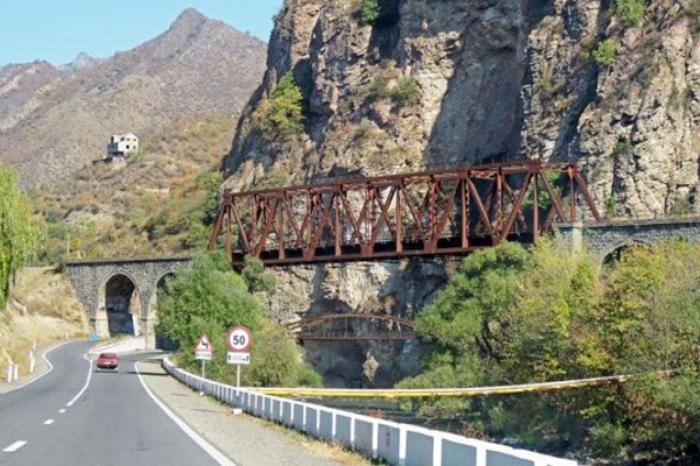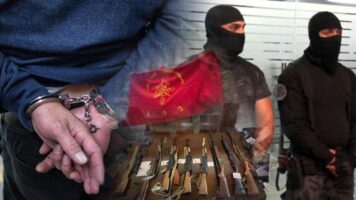Path to disaster: Loss of statehood in exchange for peace
17.07
2025
Part Two
To seize control of the road to Iran from Armenia, Baku is expected to achieve the following steps in negotiations with Pashinyan:
- Armenia will have to “return” Tigranashen to Azerbaijan, and in the northeast, in Tavush, three other villages—or, in other words, all “enclaves.” I do not rule out that this process could happen as soon as possible, within the coming weeks.
- In December of this year, the OSCE Ministerial Council meeting will take place. This council is the highest executive body of the organization and holds an annual summit in December. I do not exclude the possibility that a joint Armenia-Azerbaijan request regarding the dissolution of the OSCE Minsk Group could be submitted to the OSCE Secretariat. (A few months ago, I discussed this topic in a separate analysis, explaining why and how such a process could be blocked.) Nikol and Aliyev are likely to do this to definitively close the Nagorno-Karabakh issue, announcing that Armenian-Azerbaijani peace negotiations have ended and that the parties will sign a peace agreement.
- The most dangerous thing that could happen is that Nikol will amend the Constitution and put it to a referendum during the next parliamentary elections in 2026. In the preamble of the new Constitution, the reference to the Declaration of Independence will be removed. This is no secret; it will be phrased to state that Armenia has no territorial claims against any state. It is not that the current Constitution contains such a claim—Nikol will insert this foolish text into Armenia’s fundamental law. I do not rule out attempts to change the parliamentary model of governance in the new Constitution. I am also convinced that the presidential model of governance is more suited to our mindset—not necessarily better, since all three forms have advantages and drawbacks. The real issue is effective systemic governance. By changing the form of government, Nikol and his inept clique aim to continue ruling for at least another ten years—until the keys of Yerevan are de facto handed over to Turkey and Azerbaijan. To this end, any obstacles to implementing this plan must be removed, including the Armenian Church, the ARF, and other national forces. Nikol’s purpose in amending the Constitution is not to serve the country but to prolong and strengthen his own rule. In this process, he and his associates have committed to suspending the ARF’s activities in Armenia.
The end of all this will be the most disastrous: Nikol will be awarded the Nobel Prize for treasonous activities. I do not rule out that he will personally go to Ankara, speak at the Turkish Grand National Assembly, and attempt to play Anwar Sadat. I predicted this five years ago and am convinced that his only way to save his Armenian-defeating essence is to become a Nobel Peace Prize laureate, in order to remain under international safe control. Turkey, under pressure from the West, will half-heartedly declare that yes, there was a Genocide, for which we apologize, but Armenia has no demands and should not have any – neither compensation, nor material, nor moral, nor territorial demands. Later, Nikol may be persuaded to ratify the Treaty of Kars anew, establishing a new treaty between Turkey and Armenia. This is the twisted destiny awaiting us under a distorted government. The main architect of this plan is the West, which may also share the Nobel Prize with the minor players, Aliyev and Pashinyan. The West seeks external victories to present to its peoples. It has failed in Ukraine—the Russians are holding on to their interests—the Middle East is unstable, and several states risk fragmentation under a new Sykes-Picot-style agreement. Iraq, Syria, and Lebanon face division. As I have repeatedly noted, the key to this region remains the Kurdish issue; the Kurds will be granted limited autonomy in Syria, and thus Turkey’s appetite will be curbed. Turkey will fragment Syria and extend its influence over Aleppo and Idlib. Additionally, Tripoli in Lebanon, which is pro-Turkish, may be separated and merged with a Syrian territory under Turkish influence.
Now let us examine the connection to Syunik.
A new nefarious plan is circulating in Washington corridors, aimed at redrawing the map of the Greater Middle East—a discussion that U.S. decision centers have been having since 2003, after the Iraq invasion. Peterson, Condoleezza Rice, and others have addressed it. These plans are periodically updated and made known to the public. The U.S. intends to change state governance philosophy rather than regimes or administrations. In simple terms, if Syria has Alawites, Druze, Sunnis, Shiites, Kurds, Turkmens, and Christians who cannot reconcile, then the Damascus administration should be assisted and partially federalized. Outwardly, the state remains, but each group retains its ethnic or religious symbols—like in Chechnya, Ingushetia, Kalmykia, California, Nevada, and other federal units. But if in the case of the U.S., the independence of such federal units is impossible, then in the case of a weak state like Syria, it is a matter of time. France, Britain, and the U.S. can ignite interreligious or interethnic conflicts to preserve their influence, as in Lebanon or Syria, encouraging groups to take up arms and demand independence. Lebanon’s 15-year civil war (1975-1990) provides clear examples.
Where does Turkey fit in? The U.S. is discussing the creation of Neo-Ottoman provinces. Turkey currently has 81 provinces; the new plan reduces them to 9–10 larger provinces, two of which will have Kurdish majorities. In fact, one of the pillars of the Turkish state, the leader of the 1980 military coup and later the president of Turkey, Kenan Evren, had such an idea, and since the 80s of the last century, Turkey had been thinking about implementing such an idea, which had U.S. support, since Evren personally and the Turkish armed forces were under the direct protection or patronage of NATO and the U.S. Now it seems that the program is being updated with the same logic, but with a different methodology. They want to give Turkey control of the Sunni office in Syria and Lebanon, and when the U.S. ambassador in Turkey talks about such a thing, the issue should not be approached superficially. This is not a random statement, but a systemic geopolitical message. And if Armenia does not understand that message correctly, it may find itself in the position of an object of the process and not a subject.
U.S. Ambassador to Turkey Tom Barrack has discussed forming “new regional units.” particularly in the north of Syria, including potential redrawing of Lebanon’s borders. Since 2003, Americans have circulated the “New Middle East” project, addressing Iraq’s federalization, the creation of Kurdistan, Syria’s division, and even potential territorial changes in Armenia. Today, the same doctrine returns in a revised form:
- Resolve the Kurdish issue through “controllable autonomy,” not statehood;
- Establish Turkey’s influence as a territorial, not diplomatic, factor;
- Impose peace on countries that have no support.
This implies that if Turkey consolidates control in Syria through “security zones,” a similar model could be applied to Armenia, for example regarding the Syunik corridor, strategic pressure on Jermuk, and the opening of fronts in the direction of Tavush. In short, this means a Turkish-Azerbaijani dual pressure disguised as a peace initiative. The Pashinyan government promises open borders, regional integration, and economic development, but in practice:
- Azerbaijan continues to refer to “Western Azerbaijan”;
- Turkey links normalization of relations with Armenia to a complete resolution of the Artsakh issue;
- Armenia’s international position weakens under unilateral Iranian support.
Meanwhile, Armenia has no foreign policy initiative. Unlike Camp David (1978-79), where Egypt initiated a process for state reconstruction, here the process is imposed on Armenia for the benefit of regional powers, particularly Turkey. Azerbaijan has no time, and the alternative to worsening its relations with Russia is the policy of extracting an unimpeded route through Syunik as an alternative to Iran and Russia. Unlike the classic “territories for peace” model of Camp David, here Armenia cedes without security in exchange for peace. Armenia thus finds itself at the crossroads of a geopolitical struggle.
- The West wants to “open” the Caucasus to monitor Iran;
- Turkey seeks to unite the “Turkic world” from the Caspian to the Mediterranean;
- Russia remains silent, continuing to swallow geopolitical humiliation;
- Iran warns, but Yerevan rejects practical Iranian security mechanisms.
In this context, Armenia approaches peace without security, an independent agenda, or power balance. The “peace” model offered lacks balance or equitable interests. It only imposes one-sided concessions in exchange for vague promises, without mechanisms for security, peace guarantees, or international oversight. This is all that the anti-Armenian government of Armenia is going for, and in order for all this to become a reality, they must suppress all national forces and actors.
The main question remains: what to do? As I have repeatedly noted, a nationwide awakening—without shedding a drop of blood—is essential to counter Pashinyan, whose time is limited, while his tyrannical conduct proves the urgency. At the right moment, the quick-thinking members within his party will act decisively, and nationwide anger and regime change will become a reality.





